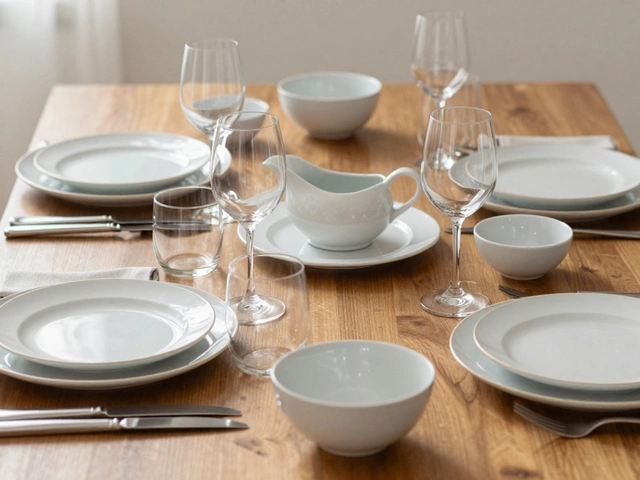Bedding Material: Your Quick Guide to Choosing the Right Fabric
When it comes to a good night’s sleep, the fabric of your sheets and blankets matters more than most people think. A comfy material can keep you cool in summer, warm in winter, and feel gentle on skin all night long. Below you’ll find the most common bedding fabrics, what they’re best for, and simple care tips that will make them last longer.
Common Types of Bedding Fabric
Cotton is the go‑to choice for many because it’s breathable, soft, and easy to wash. Look for long‑staple varieties like Egyptian or Supima if you want extra durability and a smooth feel. Thread count matters, but the quality of the cotton matters more – a 300‑thread count percale can feel fresher than a 600‑thread count sateen.
Linen is perfect for hot climates. Made from flax fibers, it gets softer with each wash and has natural moisture‑wicking properties. It does wrinkle more than cotton, so if you don’t mind a relaxed look, linen can add a laid‑back vibe to your bedroom.
Microfiber (synthetic polyester or nylon blends) offers a smooth surface that resists stains and dries quickly. It’s a budget‑friendly option, but it can trap heat, so it’s best for cooler rooms or for people who sleep under a heavy duvet.
Bamboo blends have become popular for their silky feel and eco‑friendly reputation. They’re naturally antimicrobial and stay cool, making them a solid pick for anyone who overheats at night.
Flannel is a brushed cotton or wool fabric that traps air for extra warmth. It’s ideal for winter bedding, but you’ll want a lighter weight if you live in a milder climate.
Caring for Your Bedding Material
Proper care keeps your sheets feeling fresh and extends their life. For cotton and linen, use warm water and a gentle detergent; avoid bleach unless the label says it’s safe. Toss in a few tennis balls when drying to help keep the fibers fluffy.
Microfiber should be washed on a cold cycle to prevent melting the fibers. Skip fabric softener – it can coat the material and reduce breathability.
Bamboo blends like a low‑temperature wash and a short tumble dry. Too much heat can damage the natural proteins that give bamboo its softness.
Flannel benefits from a warm wash and a medium tumble setting. If you notice pilling, switch to a lower heat setting or let it air‑dry.
Regardless of the fabric, avoiding over‑drying prevents shrinkage and keeps the weave intact. If you’re unsure, always follow the care label – it’s the fastest way to keep your bedding looking and feeling great.
Choosing the right bedding material doesn’t have to be confusing. Think about your climate, how you sleep, and how much effort you want to put into care. Cotton for everyday use, linen for a breezy feel, microfiber for easy upkeep, bamboo for cool comfort, and flannel for winter warmth. Mix and match as you like – just remember to treat each fabric the way it prefers, and you’ll enjoy cozy, long‑lasting nights for years to come.

Best Type of Bedding: What Actually Matters Most
Picking the best type of bedding isn’t all about good looks—material, breathability, and maintenance make a real difference. This article breaks down popular bedding types like cotton, linen, bamboo, and blends, weighing their pros and cons for everyday life. Get tips on choosing sheets for hot sleepers, allergy concerns, and easy care. Discover how thread count really works and whether it matters as much as the label says. Find out what makes bedding truly comfortable for your needs.
Categories
- Storage (27)
- Bathroom (18)
- Sofas (15)
- Curtains (15)
- Home Decor (12)
- Bedding (11)
- Kitchenware (11)
- Cushions (11)
- Mirrors (10)
- Rugs (9)



